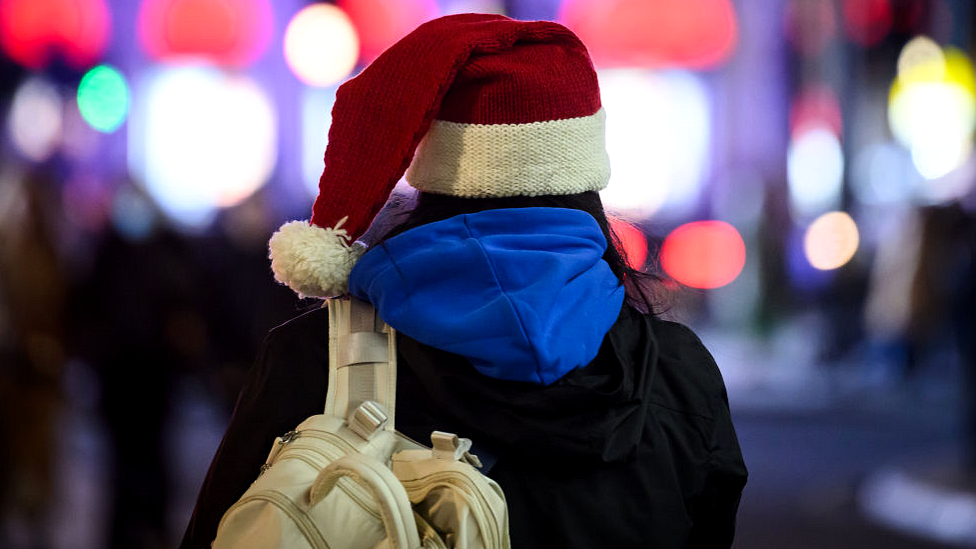Price rises boost December sales for shops
- Published
- comments

Retail sales jumped by 6.9% in December but were driven by higher prices rather than people buying more, figures show.
There was also a "healthy" rise in like-for-like sales from last December, according to the British Retail Consortium and accountancy firm KPMG.
Mindful of rising household bills, shoppers invested in energy-saving products and warm clothing.
But the overall sales rise "is largely due to goods costing more", said KPMG's head of retail Paul Martin.
He added that it "masks the fact that the volume of goods that people are buying is significantly down on this time last year".
The rate of price rises - or inflation - hit 10.7% in November which is the fastest pace in 40 years.
UK retail sales increased 6.5% on a like-for-like basis from December 2021, when they had increased by 0.6%.
Food and drink sales for December, which includes the key festive period, jumped by 8% in the first Christmas since all Covid restrictions were lifted.
The last week of trading in the run up to Christmas saw the biggest amount of cash ever recorded through the tills in the grocery sector.
But again, this was down to rising prices while the volume of goods bought was "essentially flat", according to retail analysis group IGD.
However Susan Barratt, chief executive of IGD, said: "The flat volume number is an improvement on the rest of 2022, showing that Christmas still had the power to shift the direction of the market."
Barclaycard, which has published separate figures on consumer spending on credit and debit cards during December, said there was evidence that shoppers had started stocking up for Christmas in November.
It meant that "supermarket growth slowed as many Brits stocked up on festive food and drink earlier than usual to help spread costs and avoid shortages".


There had been fears that the all important festive season would be a washout for retail given the cost of living crisis. These figures show its turned out better than expected.
The jump in sales looks healthy but the growth is still below the rate of inflation. People spent more over Christmas but bought significantly less. Clothes, beauty items and energy efficient household appliances did well. Food sales were also strong.
But things look set to get tougher now. With credit card bills landing and many consumers coming under more financial pressure from increasing living costs, there's a warning of high street casualties as we head into spring.

Major retailers including Sainsbury's, Tesco and Marks & Spencer will publish updates this week on trading over the Christmas period.
Both the BRC and KPMG said there was evidence that shoppers braved cold weather and overcame train strikes to visit shops with online non-food sales falling 3% during December, when Royal Mail staff staged a number of strikes.
Barclaycard said: "Postal strikes hampered online retail meaning shoppers headed to the high street for last-minute gifts."
Overall, Barclaycard said that spending on credit and debit cards rose by 4.4% in December. Christmas parties and the FIFA World Cup boosted spending at pubs, bars and clubs while people also looked ahead to invest in holidays for 2023.
However, Barclaycard also said that it had seen spending on utilities rise by 40.6% in December "as the drop in temperature led more households to increase their heating".
And looking forward, higher living costs are expected to weigh on consumers' budgets and the retail sector.
BRC chief executive Helen Dickinson, said: "Retail faces further headwinds in 2023. Cost pressures show little immediate signs of waning, and consumer spending will be further constrained by increasing living costs.
"Retailers are juggling big cost increases while trying to keep prices as low as possible for their customers."
- Published5 January 2023

- Published2 January 2023
